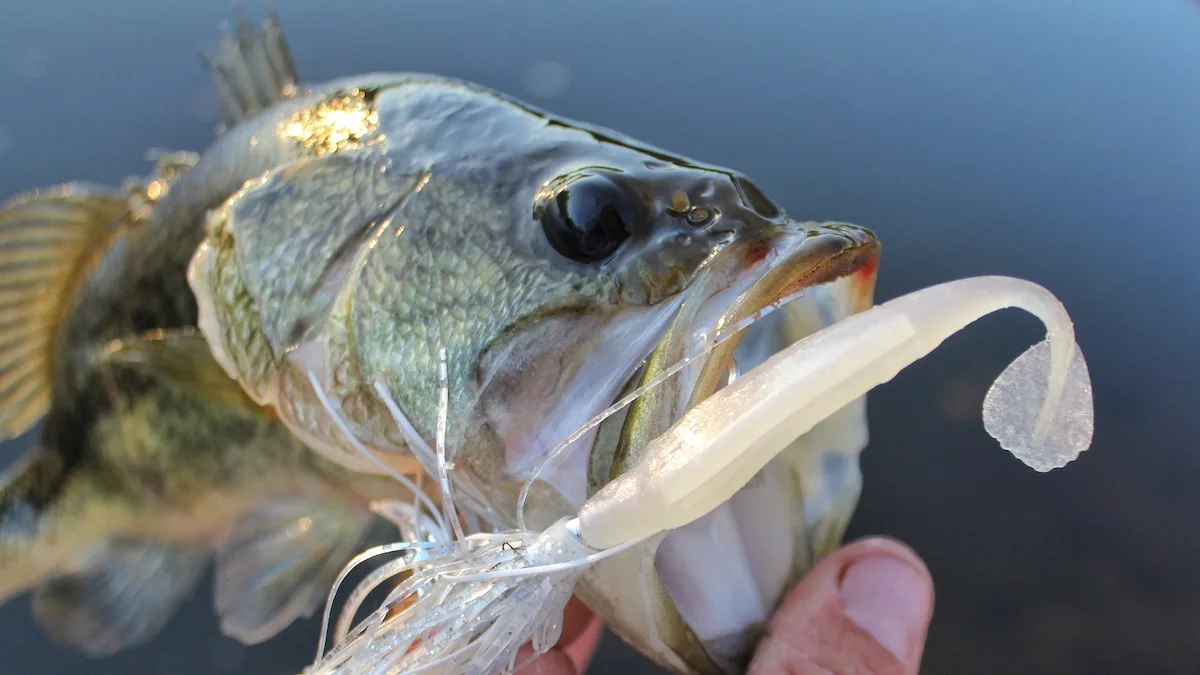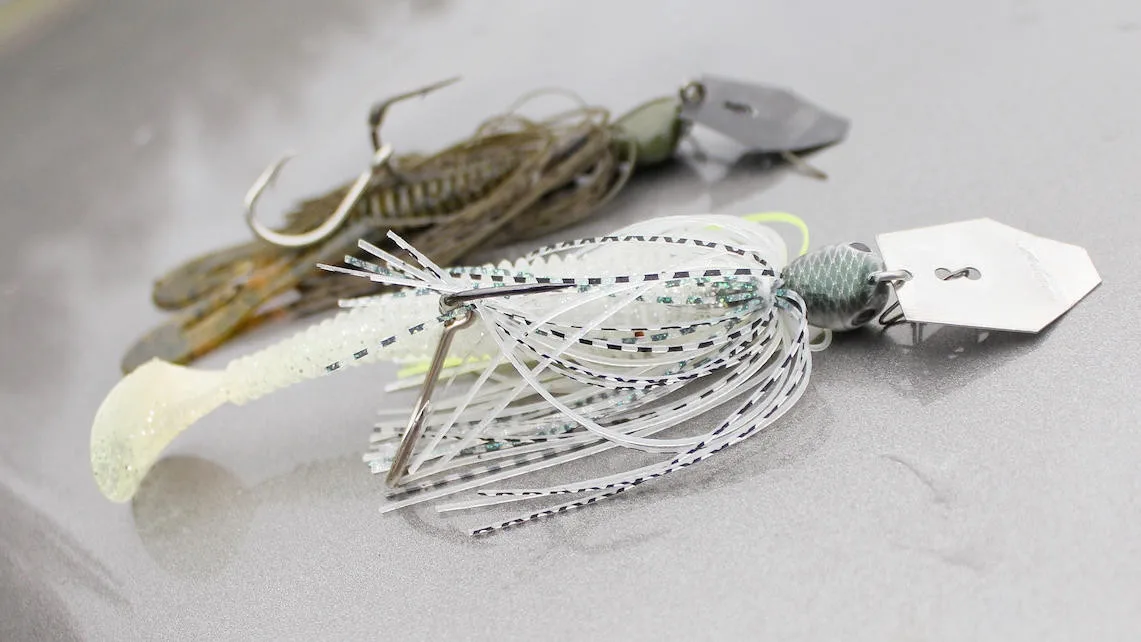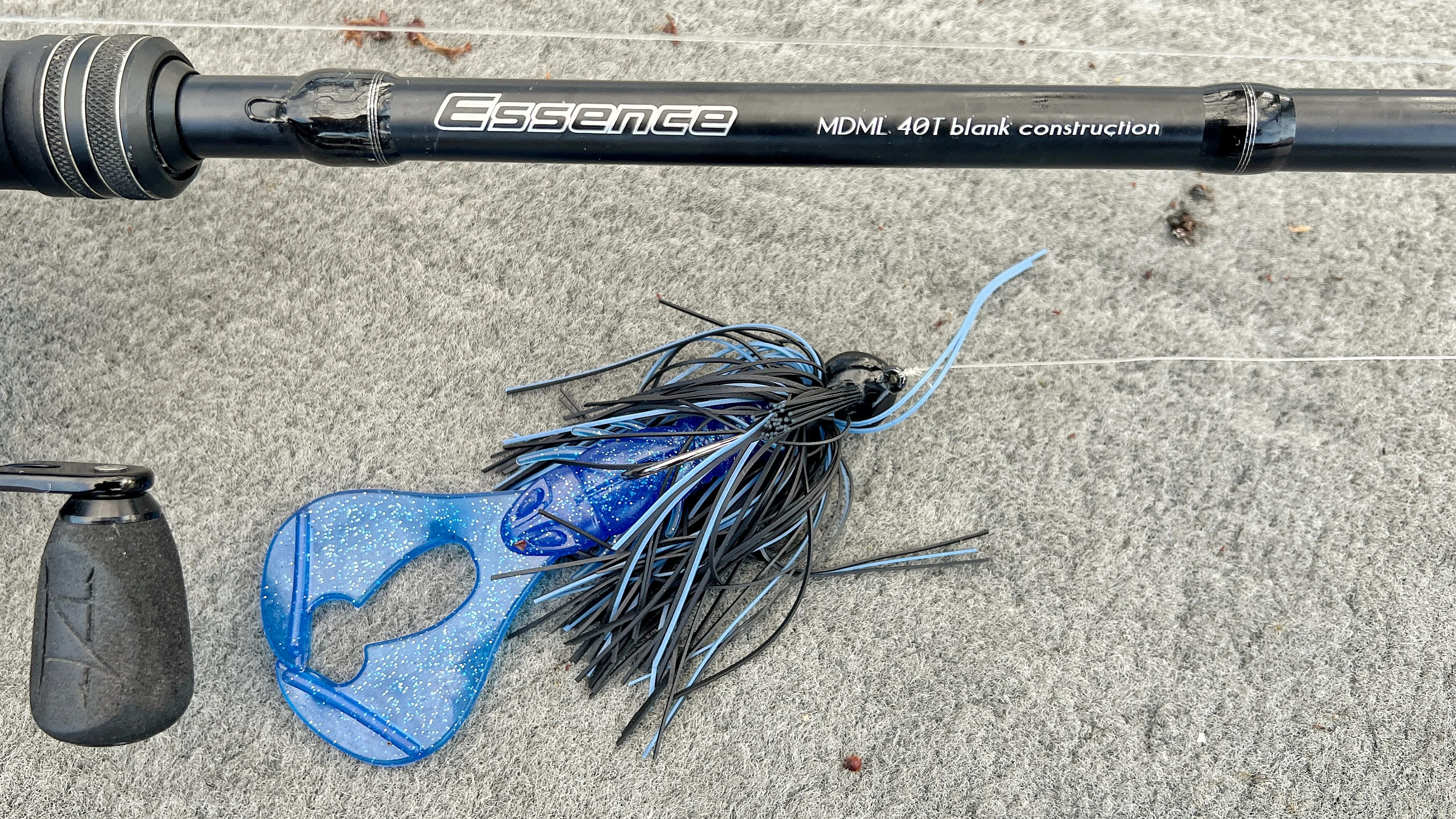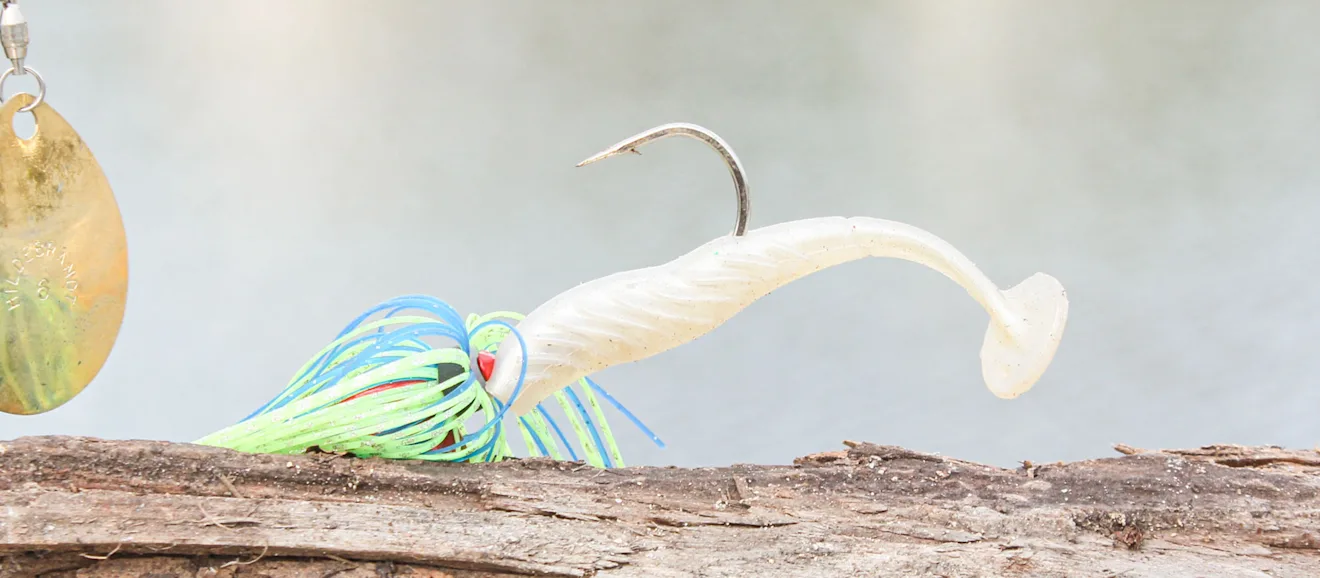Jigs, spinnerbaits, buzzbaits, and ChatterBaits are all great bass lures in their own right. But adding a soft plastic trailer to one of these lures can take it to a whole other level. When using a craw, grub, swimbait, or other soft plastic as a trailer, you can adjust the lure’s profile, its performance, or both.
There is a science to it, though. Selecting the right trailer isn’t as simple as pulling a soft plastic bait out at random and slapping it on a jig. There’s a methodical approach that can help select the perfect trailer for any of these lures based on how you want your bait to look and/or what you want it to do. Here's how to determine the right trailer for any situation.

Different Trailer Types
Most soft plastic trailers can be lumped into one of two categories: craws or swimbaits. You can also use single-tail grubs, soft plastic jerkbaits, split tails, and a few other soft plastics as trailers. But craws and swimbaits are the two primary trailer types that most anglers use. Here are some good examples of each style of trailer.
Swimbait: Rapala Crush City Mayor Swimbait
Grub: Zoom Fat Albert Grub
Split Tail: Z-Man Elaztech Split Tail Trailerz
Soft Plastic Jerkbait: Zoom Salty Super Fluke
Profile
Trailer selection is the best way to adjust a bait's profile so that it closely resembles the real forage. Take a finesse jig, for instance. These jigs are designed to be dragged along the bottom and mimic a crawfish. But, alone, they don’t look all that much like a crustacean. It’s only when you slip a small craw-style trailer on the back of a finesse jig that you get the complete picture of a crawfish.
The same match the hatch principle applies when selecting a trailer to accentuate the profile of a ChatterBait, spinnerbait, or swim jig. But instead of trying to imitate a craw along the bottom, you want your bait to look like a baitfish higher in the water column. For this reason, swimbait style trailers are better on these baits in these particular situations.
All this being said, a craw is still one of the best swim jig trailers out there for specific situations. How does this make sense if this style of jig is supposed to mimic bream and shad and not crawfish? Well, it has more to do with how the trailer affects the performance than how it changes the profile.

Performance
The reason a craw can make a great swim jig trailer (even though it doesn’t look like a baitfish) is because the claws help lift the bait. When you’re fishing a swim jig over top vegetation that is either topped out or just below the surface, this lift helps the bait ride high in the water column. Swap the craw out for a split tail trailer, and you’ll find that you can’t reel the jig fast enough to keep it from bogging down in the cover.
However, if you move to the edge of the same grass bed and fish the portion of the vegetation that is submerged in 4 or 5 feet of water, you’ll find that a swim jig performs better with a swimbait as a trailer as opposed to a craw. This is because the slender swimbait offers less resistance and provides less lift, which allows the bait as a whole to sink down deeper in the water column to where the fish and cover are.
Rate of Stall and Rate of Fall
You can fine-tune your trailer selection between two different baits in the same category. For instance, a slim swimbait with a flat, forked tail (like the Yamamoto Zako) offers less resistance than a swimbait with a wider-wobbling, harder-kicking boot tail (like the Rapala Crush City Mayor). Thus the same exact ChatterBait can be reeled slower with the Mayor as a trailer than it can be with the Zako.
What we’re talking about is the “Rate of Stall” (ROS). The ROS is the speed at which your bait can be reeled through the water while maintaining the same horizontal trajectory. Because each trailer has a different ROS, you can use your trailer selection to adjust how quickly or slowly you can fish your bait effectively.
The “Rate of Fall” (ROF) is similar, but it has to do with the speed at which a bait falls through the water column. This, too, can drastically change the performance of your jig based on the trailer you use. You can take a wider craw trailer, for instance (like the Strike King Rage Tail Craw), and put it on the back of a 3/8-ounce pitching jig, and that jig will fall relatively slowly. But if you put a Strike King Menace Grub on the same exact jig instead, it will fall noticeably quicker.

Why All This Matters
Bass fishing is all about maximizing opportunities. We are on the water trying to trick a fish into biting a chunk of metal and plastic. If they suspect something is off at the last second, they won't take the bait. So making sure that the profile of your bait matches the hatch as closely as possible is critical—and the perfect trailer selection can help you do that.
But what's more important is the performance side of things. If you can't fish the bait effectively, it doesn't matter what it looks like, even if it's identical to the actual prey. For this reason, selecting the best trailer performance-wise sometimes trumps selecting the best profile. Think back to the swim jig in the grass example.
Fine-tuning your lure's performance with your trailer selection can help you get your bait down into the cover better or ride higher when you want it to. You can even use your trailer to get your bait to fall or swim at the perfect rate of speed.
All of these things are to be considered when selecting a trailer, but they don’t have to be confusing. Just ask yourself what you want your bait to do under the water and then choose accordingly. And don’t be afraid to change it up several times until you find the perfect combination for the mood the fish are in that day.


